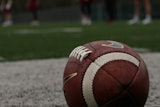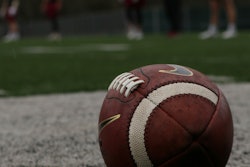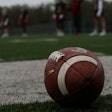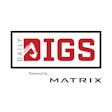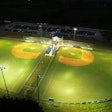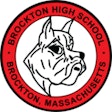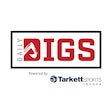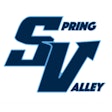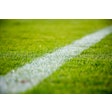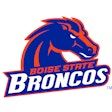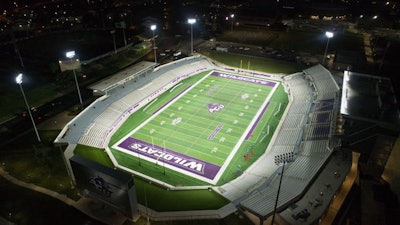
This content was provided by Eaton's Ephesus Lighting. What is sponsored content?
One of the biggest concerns of sports facility operators when choosing an LED sports lighting solution is the fear that they will end up with new technology that will soon be obsolete. This “analysis paralysis” has stopped countless number of sports facility operators, players and fans from benefiting from the power of LED sports lighting.
“Ever since we introduced the first LED sports lighting solution in 2012, we continually hear the concern from facility operators that they’re afraid to commit to a new LED sports lighting solution,” said Lee Davis, General Manager of Eaton’s Ephesus Sports Lighting. “Their concerns are either that they don’t currently have the resources to buy all of the functionality they will want, or they fear something better coming along next year. That’s is why we offer smart fixtures that allow our customers to benefit as we innovate.”
Both of these scenarios played out at Abilene Christian University’s newly constructed Wildcat Stadium. The new 12,000-seat venue, which brought football back to campus for the first time since 1942 was originally designed with a metal halide sports lighting system. But when LED was proposed as an alternate midway through the construction process, the facility operators convinced administrators that they needed to look to the future and go with an LED solution.
LIGHT, REVOLUTIONIZED: View More From This Series
Despite a disappointing 2-9 season on the field in 2017, ACU fans, coaches and players celebrated the return of Wildcat football to campus under the lights of their new $50 million stadium.
As ACU prepared for the 2018 season, they were pleasantly surprised to experience another benefit of the smart Ephesus All-Field LED fixtures. An innovation to the AirMesh system they had installed, as part of their LED solution, now allowed them to upgrade the system to include dynamic scenes and fan entertainment functionality.
PHOTOS: Wildcat Stadium, featured in AB's 2018 Architectural Showcase
“It’s amazing to finally have a home of our own at the new Wildcat Stadium. The facility is great all around and engages the community and student body in a new way while providing an excellent experience for our athletes. The sports lighting has exceeded our expectations for overall quality and uniformity while the addition of the special effect lighting scenes takes the fan experience to a whole new level,” said Drew Long, Associate Director of Athletics for Internal Operations.
Now that “future-proofed” adaptable LED sports lighting has arrived, here are four concerns that facility operators no longer face when evaluating the benefits of switching to an LED sports lighting solution.
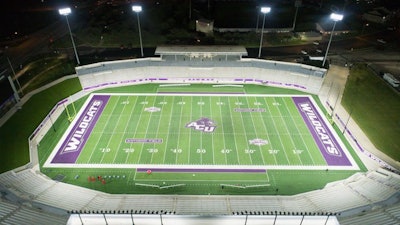
1. BUDGET CONSTRAINTS will not allow me to purchase the complete functionality I will eventually need.
Adaptable LED sports lighting offers customers a suite of a-la-carte features and functionality. This allows them to buy an LED sports lighting system
and then add features as they are needed or as budgets increase. Some facility operators have also indicated that they will be able to invest their energy savings for added features and functionality. A few of the options that will be available include; RGBA color, beam tuning, color temperature tuning, remote health/status monitoring and a dynamic scene builder with the capability to make personalized lighting scenes.
2. EVOLVING TECHNOLOGY will make the system I buy today antiquated by the time it is installed.
Many current LED sports lighting systems are simply a string of independent fixtures that are only connected via the in-house control system to turn the
lights on and off. An adaptable LED sports lighting system is designed with an intelligent cloud data approach that connects the entire system, thus allowing users to remotely monitor system heath and upload new features, functionality and upgrades.
3. WHAT I NEED TODAY might not be what I need in 25 years.
The long lifespan of an LED sports lighting solution can be a curse and a blessing. But with the ability to add features, functionality and technological innovations, facility operators can be assured that the system they buy today will remain state-of-the-art and solve problems they can’t yet anticipate.
4. WARRANTIES are expensive and never seem to cover the service or parts I need.
The ability to monitor system health and usage has allowed warranties to evolve from a quarter-decade long coverage plan that treats everyone the same, to a more personalized service plan. Rather than committing for 25 years, facility operators can choose a 10 year traditional warranty and then enter into an annual service agreement for another decade based upon their specific use and health of their system.
To learn more about the latest in LED sports lighting technology, visit ephesuslighting.com.
This article is part of a monthly series on sports lighting. View the entire series here.














